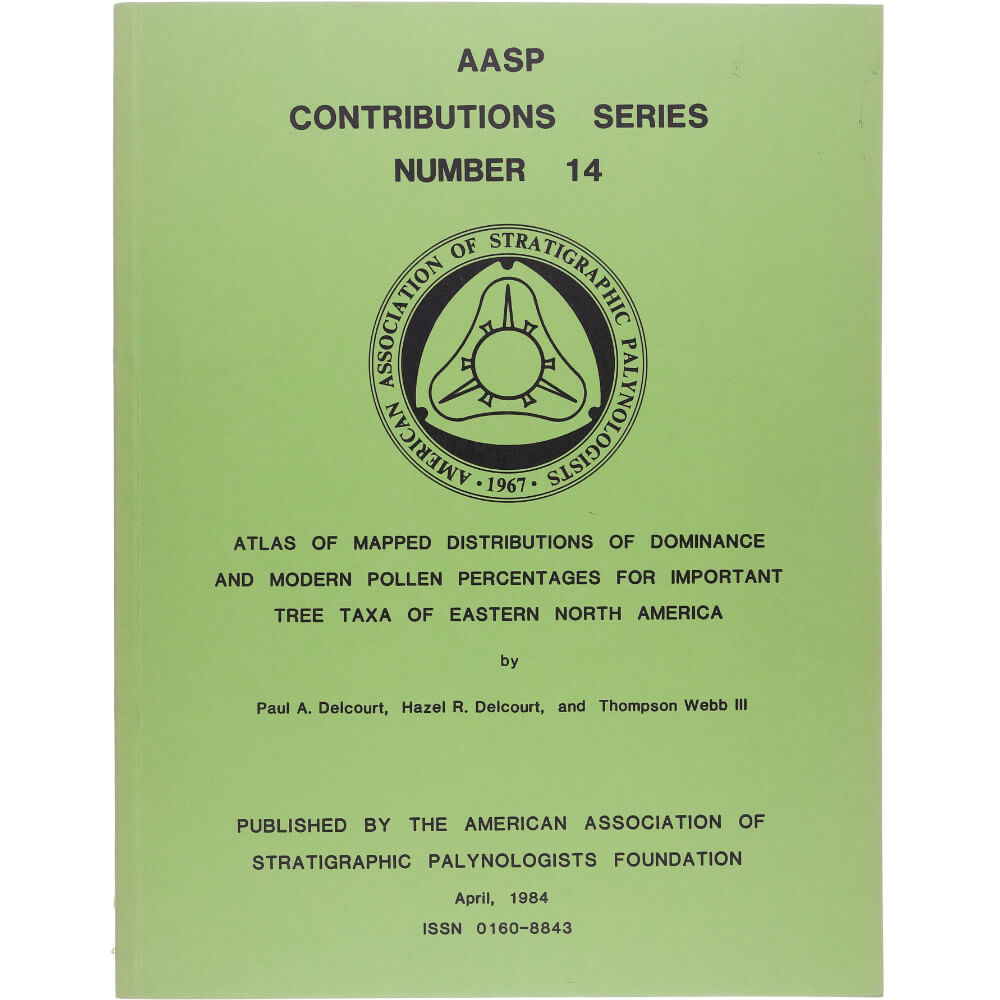Contributions Series Nr. 14
$4.00
Atlas of Mapped Distributions of Dominance and Modern Pollen Assemblages for Important Tree Taxa of Eastern North America
Paul A. Delcourt, Hazel R. Delcourt & Thompson Webb III
1984
PDF & Hardcopy available
133 pp.
Description
Abstract
In this atlas, we summarize the contemporary distributions of major tree taxa and their corresponding pollen percentages across eastern North America. Contoured isophyte maps of percent values for growing stock volume (% GSV) are based upon 1742 county and inventory-unit summaries made available by the United States and Canadian Forest Services.
Contoured isopoll maps of arboreal pollen percentages (% AP) are based upon 1684 surface samples distributed across the region from 250 to 600 N latitude and from 50° to 105°w longitude. We include paired maps for the following dominant, subdominant, and common tree taxa: Abies, Acer, Betula, Carya, Celtis, Cupressaceae plus Taxodiaceae, Fagus grandifolia, Fraxinus, Ilex, Juglans, Larix laricina, Liquidambar styraciflua, Liriodendron tulipifera, Magnolia, Nyssa, Picea, Pinus, Platanus occidentalis, Populus, Quercus, Salix, Tilia, Tsuga, and Ulmus. Supplemental maps for growing stock volume are included for Chamaecyparis thyoides, Juniperus, Taxodium distichum, Thuja occidentalis, Diploxylon Pinus, Haploxylon Pinus, Hard Maples and Soft Maples. Scatter plots of %GSV versus %AP illustrate the relationships of dominance in the vegetation to pollen production and dispersal for 20 important tree taxa. Geometric-mean linear regression of positive data pairs of %GSV and %AP yields slope and intercept parameters that are used to quantify modern pollen-vegetation relationships. These major vegetation and pollen data sets and calibrations provide the foundation for the use of modern analog and taxon calibration approaches for quantification of late Quaternary vegetational history in eastern North America.
